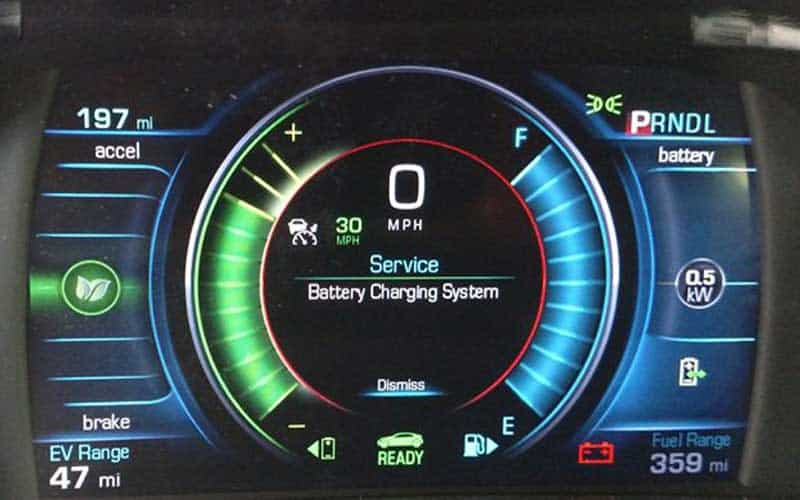When your vehicle displays the ominous “Service Battery Charging System” warning, it can elicit a flurry of concern. This alert, often accompanied by a flickering dashboard light, usually signifies that the battery is not maintaining an adequate charge, potentially leaving you stranded or stranded with reduced electrical functionality. Understanding the underlying causes and how to address them can empower you as a vehicle owner, ultimately prolonging the lifespan of your electrical system. In this guide, we will delve into the various components of your vehicle’s electrical system, elucidate the potential culprits behind the warning, and provide you with actionable steps to remedy the issue.
Understanding Your Vehicle’s Electrical System
Your vehicle’s electrical system is a complex web of components working in unison to ensure optimal performance and functionality. At its core are the battery, alternator, and starter. The battery is responsible for storing energy and providing the initial power to start the engine. Once the engine is running, the alternator takes over, generating electricity to recharge the battery and power the vehicle’s electrical systems—lights, infotainment systems, and power steering, to name a few. The starter, meanwhile, is a motor that turns over the engine on startup. Any failure within these components can trigger the battery charging system warning.
Common Causes of the Warning
1. Faulty Alternator: One of the prime suspects is the alternator. If it’s malfunctioning, it may not generate sufficient voltage to keep the battery charged. Signs of an alternator issue can include dimming lights while the vehicle is running or strange noises coming from under the hood.
2. Weak or Dead Battery: Batteries have a finite lifespan, typically around three to five years. A battery that has reached the end of its life might struggle to maintain charge, especially under load. Corrosion on battery terminals can also hinder performance.
3. Loose or Damaged Wiring: The intricate wiring harness connecting various electrical components can wear down over time. Loose or damaged connections can impede electrical flow. Inspecting the wiring for frays or breaks can be a quick diagnostic step.
4. Failed Voltage Regulator: The voltage regulator is responsible for controlling the amount of voltage produced by the alternator. A malfunction could lead to overcharging or undercharging the battery, resulting in a “Service Battery Charging System” warning.
5. Accessory Load: Sometimes, the issue isn’t a component failure but rather an excessive load from accessories. High-drain devices, such as aftermarket audio systems or additional lighting, can pull significant power from the battery.
6. Parasitic Drain: A parasitic drain occurs when electrical systems consume power while the vehicle is off. Common culprits include glove box lights, aftermarket devices, or even factory-installed systems that malfunction.
Diagnosing the Problem
Effective diagnosis of the “Service Battery Charging System” warning is critical to remedying the issue. Start by performing a visual inspection. Look for obvious issues like disconnected or corroded battery terminals. Next, it may be prudent to conduct a multimeter test. Measure the voltage across the battery terminals; a healthy battery should read between 12.4 and 12.7 volts when the engine is off. With the engine running, the reading should rise to between 13.7 and 14.7 volts, indicating that the alternator is functioning correctly.
If the battery appears fine, turn your attention to the alternator. Test this by observing the battery voltage while revving the engine; if voltage does not increase, this is a strong indication of a faltering alternator. Additionally, checking the voltage regulator may require a specialized tool or professional assistance, which may save time and effort.
Steps to Fix the Issue
1. Replace the Battery: If the battery tests weak or shows signs of physical damage, replacement is a straightforward solution. Always ensure compatibility with your vehicle model, as not all batteries are created equal.
2. Repair or Replace the Alternator: Should testing reveal an ailing alternator, repair may be possible, but replacement is often the most reliable solution. Ensure that any new unit meets OEM specifications.
3. Secure Loose Wiring: If loose or damaged wiring is identified, securing connections or replacing wiring can restore functionality. Ensure that any connections are clean and free of corrosion.
4. Address Accessory Loads: If you suspect excessive accessory load, evaluate any aftermarket additions and consider their overall energy consumption. Sometimes, redistributing power demands or turning off non-essential systems can alleviate strain.
5. Professional Inspection: If all else fails, seeking professional guidance is prudent. An experienced technician can conduct a thorough examination of your electrical system and offer tailored solutions.
Conclusion
The appearance of the “Service Battery Charging System” warning can indicate various problems, from minor inconveniences to major component failures. By understanding the components of your electrical system, diagnosing issues methodically, and taking appropriate actions, you can mitigate risks and ensure your vehicle operates efficiently. Regular maintenance checks on your vehicle’s electrical system not only help avert potential malfunctions but also enhance your overall driving experience, ensuring that your trips remain uninterrupted and enjoyable. Always remain vigilant, as early detection is key to preventing costly repairs down the line.
